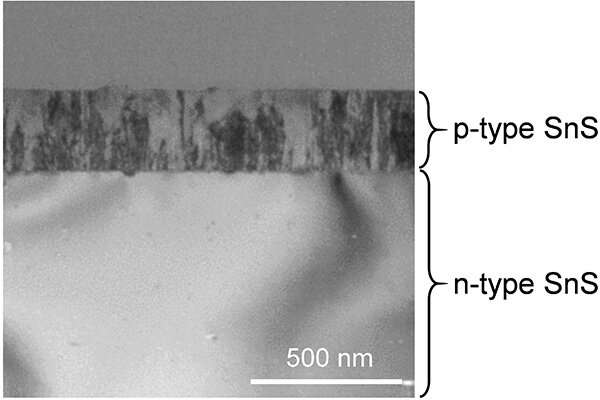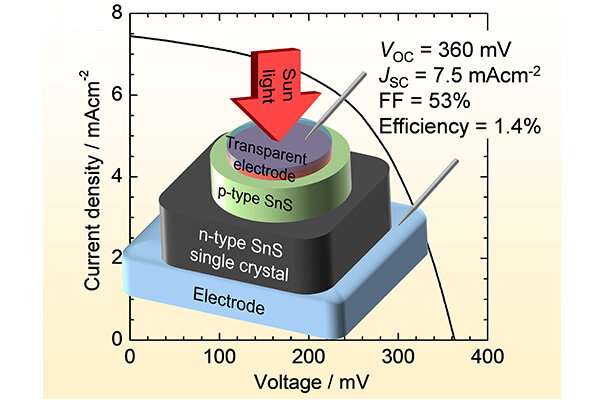Researchers develop an efficient tin monosulfide solar cell prototype

A team of researchers from Tohoku University have created a tin monosulfide (SnS) solar cell that boasts attractive performance levels, promoting affordable and clean energy and moving society closer to achieving the UN's sustainable development goals.
Their results were published in the journal Solar RRL on February 25, 2021.
Current thin film solar cells often use cadmium telluride and copper indium gallium selenide to induce the photovoltaic effect. However, these materials contain rare and toxic elements. In contrast, tin and sulfur are abundant, easy to refine and non-toxic.
The key to high efficiency SnS solar cells lies within the p-n homojunction. P-type SnS is easy to fabricate, but the same cannot be said of n-type SnS. The complexity of fabricating n-type SnS has stalled the manufacturing of the p-n homojunction for SnS solar cells.
However, the team, led by Sakiko Kawanishi and Issei Suzuki from Tohoku University's Institute of Multidisciplinary Research for Advanced Materials, overcame this barrier and fabricated a p-n homojunction by using a large n-type SnS single crystals. The large crystals were grown using an original technique released in August 2020.
The newly created solar cell's open circuit voltage, which contributes to the conversion efficiency, recorded 360 mV even with no device optimization.

"This is remarkable since this is only our first prototype, yet it still recorded the comparable open circuit voltage as previously reported heterojunction SnS-based devices," said Kawanishi.
Although the conversion efficiency of the "first" device is still 1.4%, it is expected to surpass the best efficiency of the heterojunction devices (~5%) rapidly through device optimization.
Kawanishi adds, "Our group believes this significant first achievement further accelerates the future development for SnS solar cells' practical application."
More information: Sakiko Kawanishi et al. SnS Homojunction Solar Cell with n‐Type Single Crystal and p‐Type Thin Film, Solar RRL (2021). DOI: 10.1002/solr.202000708















